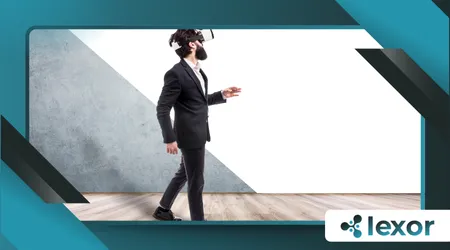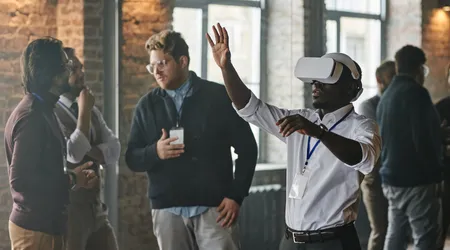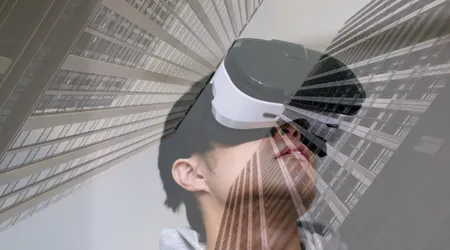How VR is Helping Architects Design the Cities of Tomorrow

Today, VR is helping architects reimagine urban landscapes, pushing the boundaries of creativity and functionality.
Virtual reality is no longer just a tool for gaming or entertainment; it has become an indispensable asset in designing the cities of tomorrow.
By immersing architects in lifelike digital environments, VR enables them to visualize, refine, and perfect their designs like never before.
This technology allows for a more interactive design process, where architects can experiment with different styles and materials without the constraints of physical limitations.
Moreover, as the technology becomes more affordable, smaller firms are increasingly adopting VR tools, democratizing access to advanced design capabilities.
The Evolution of Architectural Design: From Blueprints to Virtual Realities
Architecture has always been a blend of art and science, but the tools of the trade have undergone a seismic shift.
Gone are the days when architects relied solely on hand-drawn blueprints and physical models.
The advent of computer-aided design (CAD) marked a significant leap, but even that pales in comparison to the transformative power of virtual reality.
With VR, architects can create dynamic models that evolve in real-time, allowing for immediate adjustments based on client feedback.
This shift not only enhances the creative process but also fosters a deeper understanding of spatial relationships and design impact.
VR is helping architects bridge the gap between imagination and reality.
By creating immersive 3D environments, architects can walk through their designs, experiencing spaces as if they were already built.
This level of immersion not only enhances creativity but also minimizes errors, ensuring that every detail is meticulously planned.
Additionally, VR facilitates a more inclusive design process, allowing clients and stakeholders to engage actively in the development of their spaces.
+ The Future of VR in Healthcare: Revolutionizing Medical Training 2025
The Role of VR in Urban Planning
Urban planning is a complex puzzle, requiring architects to balance aesthetics, functionality, and sustainability.
Traditional methods often fall short in addressing the multifaceted challenges of modern cities.
Enter virtual reality.
With VR, architects can simulate entire cityscapes, testing how buildings interact with their surroundings.
They can analyze traffic flow, assess environmental impact, and even predict how natural light will affect energy consumption.
For instance, a 2022 study by the American Institute of Architects found that VR is helping architects reduce design errors by up to 40%, saving both time and resources.
Moreover, urban planners can utilize VR to engage the public in the planning process, allowing citizens to visualize proposed changes and provide valuable feedback.
This participatory approach can lead to more community-oriented designs that reflect the needs and desires of residents.
Enhancing Collaboration Through Immersive Technology
One of the most significant advantages of VR is its ability to foster collaboration.
In the past, architects, engineers, and clients often struggled to align their visions.
Miscommunication and misunderstandings were common, leading to costly revisions.
Now, VR is helping architects and stakeholders visualize projects in real-time.
Clients can don a VR headset and explore a virtual model of their future home or office, providing immediate feedback.
This collaborative approach not only streamlines the design process but also ensures that everyone is on the same page.
Furthermore, remote collaboration has become more feasible, allowing teams from different geographical locations to work together seamlessly.
Virtual meetings in immersive environments can enhance team dynamics and creativity, leading to innovative solutions.

Sustainability and VR: Building Greener Cities
As the world grapples with climate change, sustainability has become a top priority for architects.
Virtual reality is playing a pivotal role in this endeavor.
By simulating environmental conditions, architects can optimize their designs for energy efficiency and minimal ecological impact.
For example, VR allows architects to test different materials and construction techniques, identifying the most sustainable options.
They can also model the long-term effects of their designs, ensuring that cities remain resilient in the face of environmental challenges.
Additionally, using VR can facilitate the exploration of alternative energy sources and sustainable practices, helping architects make informed decisions.
The integration of VR with tools like Building Information Modeling (BIM) further enhances the potential for creating eco-friendly designs.
++ Virtual Reality in Education: Transforming the Way We Learn
Future of VR in Architecture
The potential of virtual reality in architecture is virtually limitless.
As technology continues to advance, we can expect even more groundbreaking applications.
From AI-driven design suggestions to real-time collaboration across continents, VR is helping architects shape the future in ways we can only begin to imagine.
As VR technology evolves, we may see the emergence of fully immersive design environments where architects can manipulate and experiment with their designs intuitively.
This could lead to a new era of architectural innovation, where the boundaries of creativity are pushed even further.
Furthermore, the incorporation of augmented reality (AR) alongside VR can provide architects with a hybrid approach, enabling them to visualize designs in real-world contexts.
Tables:
Table 1: Benefits of VR in Architecture
| Benefit | Description |
|---|---|
| Enhanced Visualization | Architects can explore designs in immersive 3D environments. |
| Improved Collaboration | Stakeholders can provide real-time feedback, reducing miscommunication. |
| Error Reduction | VR minimizes design flaws, saving time and resources. |
| Sustainability Optimization | Architects can test eco-friendly materials and techniques. |
Table 2: VR Adoption in Architecture (2023)
| Region | Percentage of Architects Using VR |
|---|---|
| North America | 65% |
| Europe | 55% |
| Asia-Pacific | 45% |
| Rest of the World | 30% |

Overcoming Challenges: The Road Ahead
While the benefits of VR are undeniable, the technology is not without its challenges.
High costs and a steep learning curve have hindered widespread adoption.
However, as VR becomes more accessible, these barriers are gradually being overcome.
Moreover, the integration of VR with other emerging technologies, such as artificial intelligence and the Internet of Things, promises to revolutionize the field even further.
Imagine a future where architects can not only design buildings but also monitor their performance in real-time, making adjustments as needed.
As VR continues to evolve, training and education will also play a crucial role in ensuring that architects and planners can leverage these tools effectively.
Investments in research and development will be essential to address current limitations and unlock the full potential of VR technology.
Conclusion: A New Era of Architectural Innovation
The cities of tomorrow will be shaped by the tools of today.
VR is helping architects break free from the constraints of traditional design methods, unlocking new possibilities for creativity and efficiency.
As we stand on the brink of a new era in architecture, one thing is clear: virtual reality is not just a tool—it’s a gateway to a brighter, more sustainable future.
By embracing this transformative technology, architects are not only redefining their profession but also paving the way for cities that are smarter, greener, and more livable.
The future of urban design is here, and it’s virtual.
For more insights on how VR is transforming architecture, check out articles from the Harvard Graduate School of Design and ArchDaily.
By staying informed and adapting to these changes, architects can ensure they remain at the forefront of innovation in the built environment.
